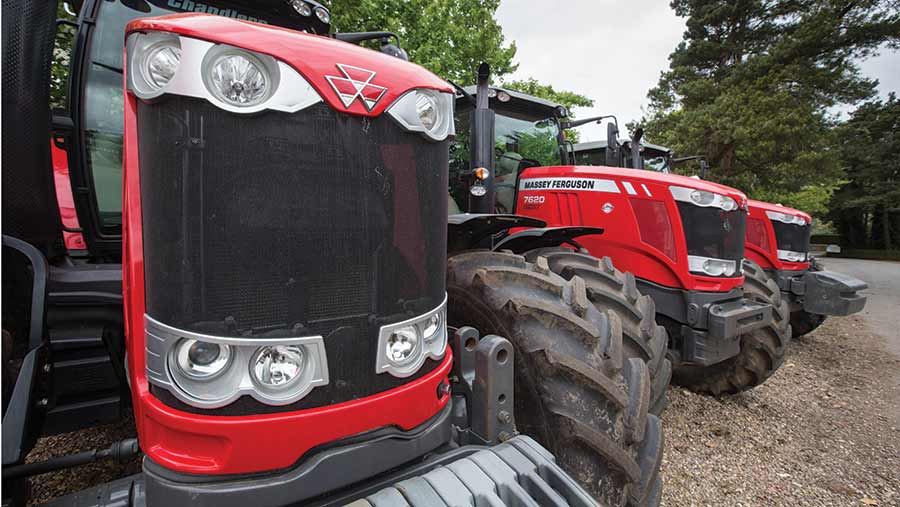Outlook 2016: New machinery market to stay subdued
 © Tim Scrivener
© Tim Scrivener Unless we see a dramatic upturn in the prices farmers get paid for the food they produce then it looks as though the market for new farm machinery will remain fairly subdued in 2016.
Back in 2012, when wheat prices were topping £200/t, cheery machinery manufacturers managed to shift more than 14,000 tractors and a whopping 1,140 combines in a year – a modern-day record.
But fast-forward to the tail-end of 2015 and things are very different. Feed wheat prices are languishing at about £100/t, the dairy sector is in crisis and new tractor sales have slumped to about 10,500 units. Combine sales are equally lacklustre with just 620 machines sold – a drop of more than 20% on 2014.
According to the Agricultural Engineers Association, the market looks set to trundle along at the same steady rate in 2016.
But it’s not all doom and gloom. For those farmers or contractors who are in the market for a new machine in 2016, the balance of power is in their favour.
With manufacturers keen to shift as many machines as possible there could be some attractive deals to be had, particularly for those looking to change several pieces of kit.
See also: Falling farm machinery sales force makers to cut production
It is a similar story in the second-hand market. The strength of the pound against the euro has hammered the once-buoyant export market and means dealers’ yards are brimming with trade-ins. Coupled with steady domestic demand, there could be some decent second-hand buys to be had.
Sales figures aside, 2016 is likely to see a continuation of the trend towards a smaller number of higher-horsepower and more generously specced machines.
Extra power
At the moment, average tractor horsepower is about 158hp, but it could breach the 160hp barrier in 2016 as farmers and contractors look to streamline their operations by pulling wider and heavier machines.
But all this extra power, speed, weight and sophistication means the process of taking agricultural equipment on the public highway is likely to get more complicated next year rather than less.
Just to recap: road speeds for tractors edged up from 20mph to 25mph in March 2015 and gross train weights (that is the total weight of tractor, trailer and the trailer’s contents) increased from 24.39t to 31t. Next year we will hopefully see a further increase in gross train weight or trailer weight (currently 18.29t) and/or a higher road speed. Or we may get nothing at all.
MOT-style roadworthiness tests for tractors are still on the cards, too. The details are very sketchy but the proposal is to have two tiers of regulation. Farmers and contractors who want to be able to use the highest legal speeds and biggest legal loads will take an annual (or maybe a biennial) roadworthiness test.
However, those who don’t want or need these higher speeds and weights will probably not need to take the test.
While most tractors on the road are in a relatively good condition, there is still some shocking kit out there. Occurrences such as seized trailer brakes, tyres on their last legs and 1am flits with no rear lights still happen, but police forces are likely to get increasingly tough on them.
Mud on the road is also becoming an increasing worry, largely because of the increase in maize production. Most police forces have been fairly tolerant of small amounts of mud in the past, but that is changing.
Lincolnshire Police, for example, is encouraging motorists to call them if they see mud on the public highway. Prosecution could follow if an injury is caused by mud, they point out, and farmers could be billed if the local authority has to clear it up. Expect to see a jump in sales of tractor-mounted brushes.

